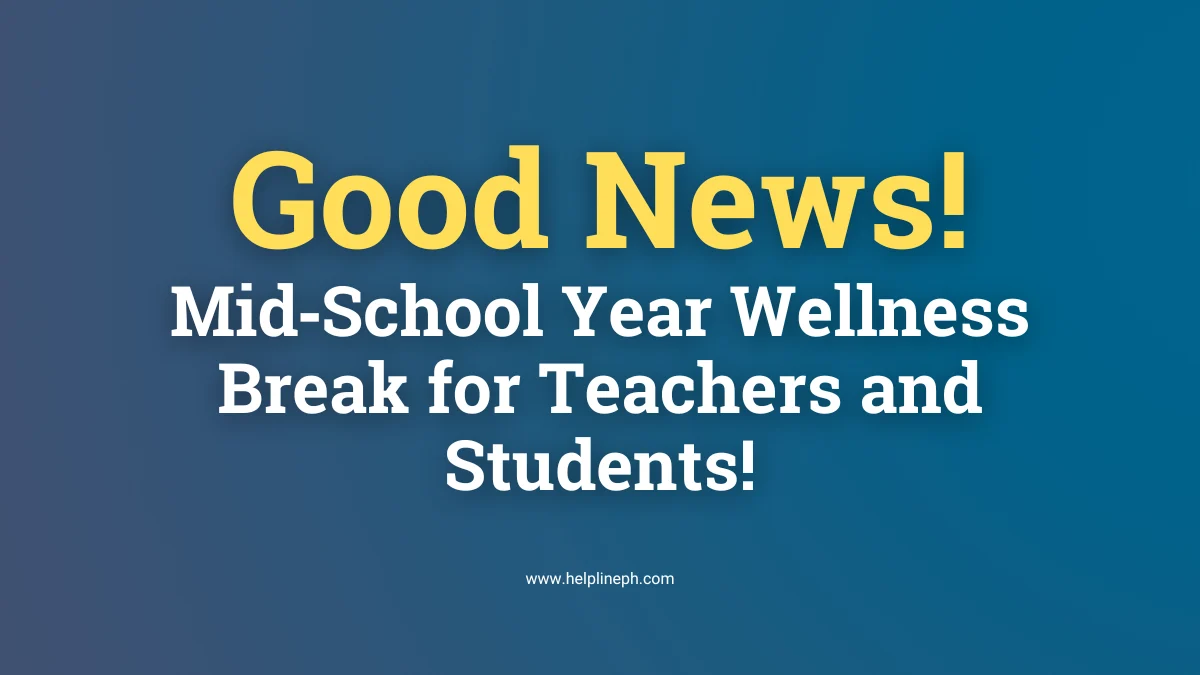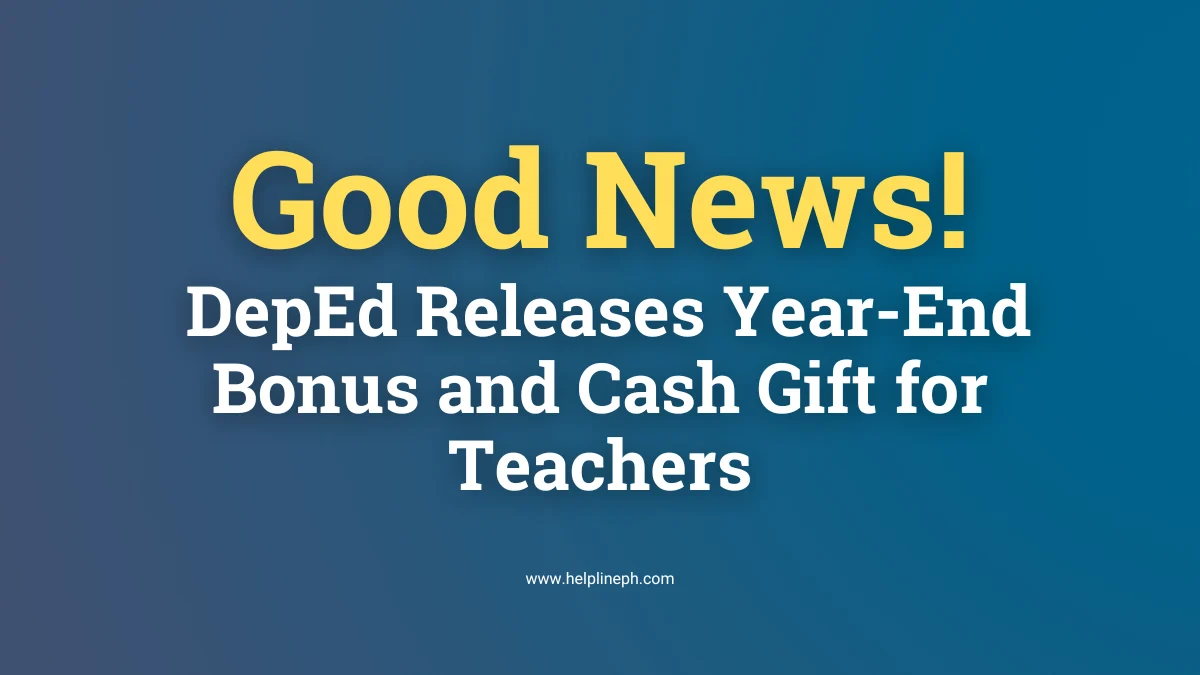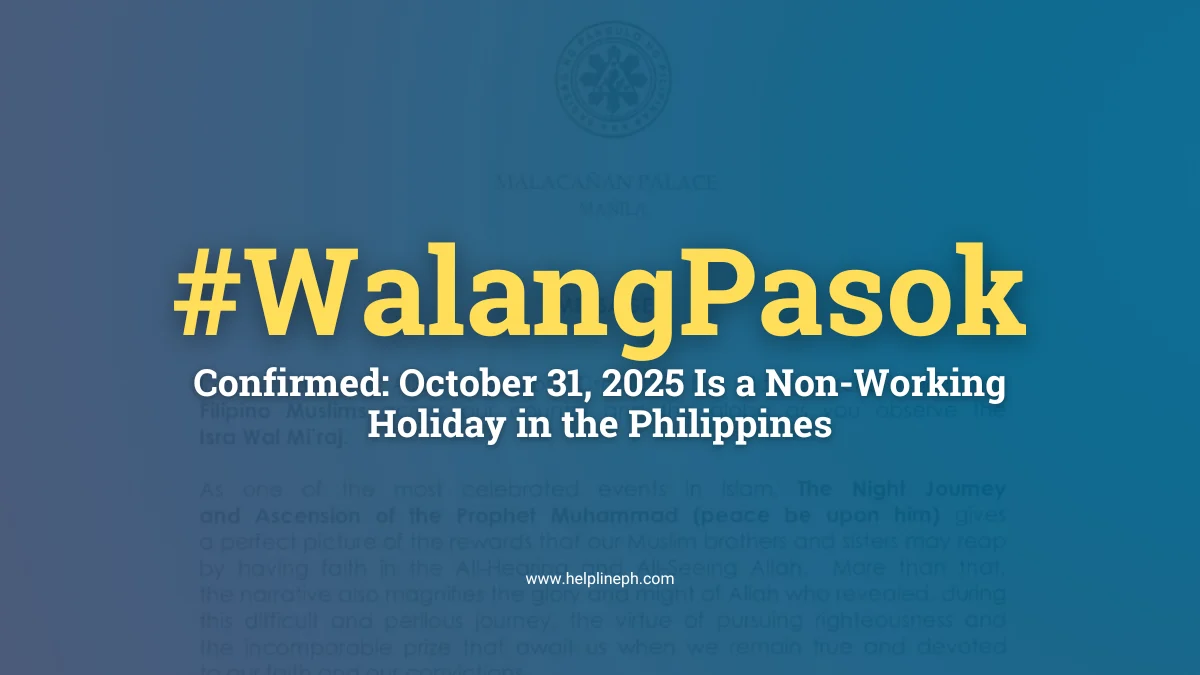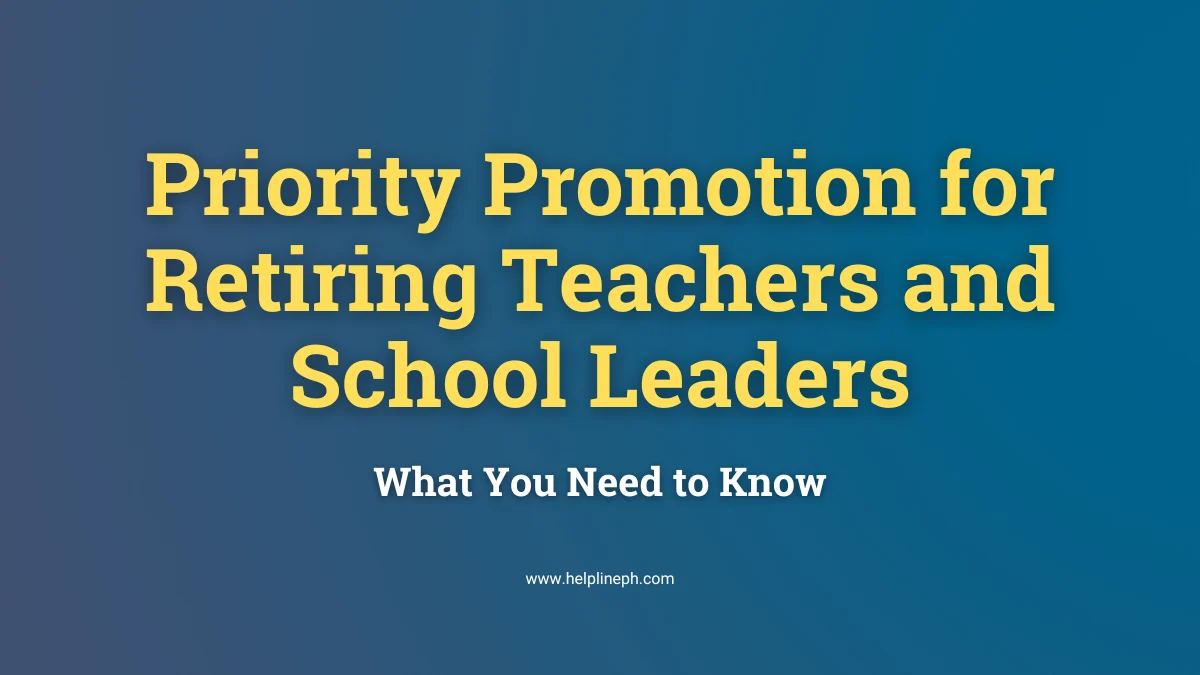I’m happy to share this helpful update about the mid‑school year wellness break. I’ll explain what it is, why it matters, and how teachers and students can make the most of it.
1. What is the mid‑school year wellness break?
The Department of Education (DepEd) is implementing a special rest period for both teachers and learners. According to the official school calendar for School Year 2025–2026, the break runs from October 27 to 31, 2025.
During this break, schools are encouraged to pause regular classes so that teachers and students can rest and recover. — It’s often called a “wellness break of learners and teachers.”
If schools have scheduled in‑service training (INSET) or professional development during those dates, they may move it or make it voluntary instead.
2. Why did DepEd decide on this wellness break?
There are several good reasons behind this decision:
- Many teachers and students faced recent emergencies — for example, natural disasters (like earthquakes or typhoons) and an increase in flu‑like illnesses. DepEd recognized that these added stress and fatigue.
- The goal is to give everyone time to refresh. When teachers are well‑rested and students are emotionally ok, learning and teaching improve.
- It aligns with DepEd’s commitment to professional development: teachers still get training opportunities (INSET) but with more flexibility.
- The calendar shows a balanced year: by placing the break in the middle of the term, schools aim to keep instruction time high while giving a meaningful rest period.
3. Who benefits and how?
Teachers
- They get several days off from regular teaching duties: time to rest, spend with family, recover from stress.
- If a training or INSET was scheduled during the break, schools can choose to move it or make attendance voluntary — so teachers aren’t forced into extra work during their rest days.
- With a refreshed mindset, teachers can return to work more focused and ready to deliver quality lessons.
Students
- Students also get the break: they get a mental and physical breather.
- It helps students who may have been impacted by external problems (illness, disaster, family disruption) to recover and come back ready to learn.
- It gives families an opportunity to reconnect: with parents/guardians, siblings, and friends outside of the usual school timetable.
Schools & Education System
- The system retains its focus on learning days: the break is scheduled so that instructional time is not lost or significantly reduced.
- The break supports school‑management flexibility: schools coordinate with their Schools Division Offices (SDO) and Regional Offices (RO) to plan INSET and other activities around the break.
- It contributes to teacher wellbeing and student wellbeing — both of which are important for effective education.
4. What should teachers, students and parents do?
Here are some friendly suggestions based on my experience and the context:
For Teachers
- Use the break really to rest — not just catch up on work. Try to pause lesson‑planning if possible, or at least reduce the load.
- If you have INSET scheduled, check with your school whether it’s moved or voluntary. If it’s no longer mandatory, feel free to choose rest instead of training.
- Use this time to recharge: spend time with family, maybe engage in a hobby, get good sleep, and attend to your mental or emotional health.
- When you return, reflect on how you’d like the remaining school year to go: what improvements you might try, what support you may need.
For Students
- Treat the break as a chance to rest your mind as well as your body. If you’ve been stressed by schoolwork, illness, or other issues, take time to recover.
- Don’t forget your learning goals: maybe review a little bit, but don’t push huge workloads. Balance is key.
- Spend quality time with friends or family, do activities you enjoy but also restful ones: reading, walking, playing.
- Get ready for classes to resume. The next quarter begins after the holidays, so maybe set small goals for your return.
For Parents or Guardians
- Support your child’s rest: encourage time off from school demands, help them relax.
- Talk about how they feel: after a break, they may come back refreshed, or may still feel stressed — your support matters.
- Coordinate with your child’s school: check for notices about training days, schedule changes, etc.
- Use this period to strengthen parent‑child interaction: it might be fewer school commitments, more family time.
For Schools / Administrators
- Make sure the school communicates clearly: dates, what’s optional, how INSET is handled.
- Use this period to plan for upcoming activities: what remains for the year, how to maximize remaining class days.
- Ensure teachers and staff are aware of wellness benefits: that the break is not just a gap in classes but a chance to restore the teaching‑learning community.
- Monitor student wellbeing when classes resume: be ready for students who may need extra support.
5. What this means for the rest of the school year
- Classes are scheduled to resume for the next academic quarter after the break (for example, after the holidays like All Saints’ Day/All Souls’ Day). Deped Tambayan+1
- Even with the break, the number of required class days and instructional time is preserved: the calendar accounts for this.
- Teachers still need to engage in professional development programs (INSET) and be ready for curriculum updates, but scheduling is more flexible.
- The wellness break sends a broader message: that wellbeing of teachers and learners is important in the education system — not just academic output.
6. My personal reflection
As someone who cares about education, I’m really glad to see a wellness break being integrated into the school calendar. I remember times when teachers and students pushed through without a pause and the energy dropped, morale dipped. This break shows that rest is part of being effective, not a luxury.
If I were a teacher, I’d plan ahead: mark the break, decide how I’d rest, maybe set aside one day for quiet time and one for being with family or doing a hobby. If I were a student, I’d use it to relax (no guilt!) and maybe pick one small educational activity just for fun, so I don’t feel completely disconnected.
The key is: when we return, we come back stronger, not drained.
Frequently Asked Questions (FAQs)
What exactly are the dates for the wellness break?
The break is set for October 27‑31, 2025 (Monday through Friday) according to the official calendar.
Is everyone required to attend trainings during the break?
No. If a school has scheduled INSET or professional training during that period, the school may move it or make it voluntary. Teachers who attend voluntarily may not be required to do a similar training later. Schools coordinate with their SDOs and ROs.
Does this break mean classes resume later than normal?
Not exactly. The break is included in the school calendar, so the instructional days are adjusted accordingly. For example, classes resume on November 3, 2025 after holidays in some cases. In the calendar, the next quarter starts then.
What if my school didn’t announce anything about the wellness break?
It’s good to check with your school administration or your School Division Office. Schools are given flexibility, but the calendar shows the break. If no announcement, you might request clarification from your school.
Can students use this break for catch‑up work or make‑up assignments?
The primary goal of the break is rest and recovery, not extra workload. It’s okay to review lightly, but the emphasis is on wellbeing rather than heavy catch‑up. If there are make‑up assignments, they should respect the purpose of the break.
Why did DepEd introduce this break now?
Because teachers and students have faced recent pressures: natural disasters, flu‑like illness surges, and work demands. The break acknowledges those and gives space for recovery. It’s also part of a balanced school year planning.





